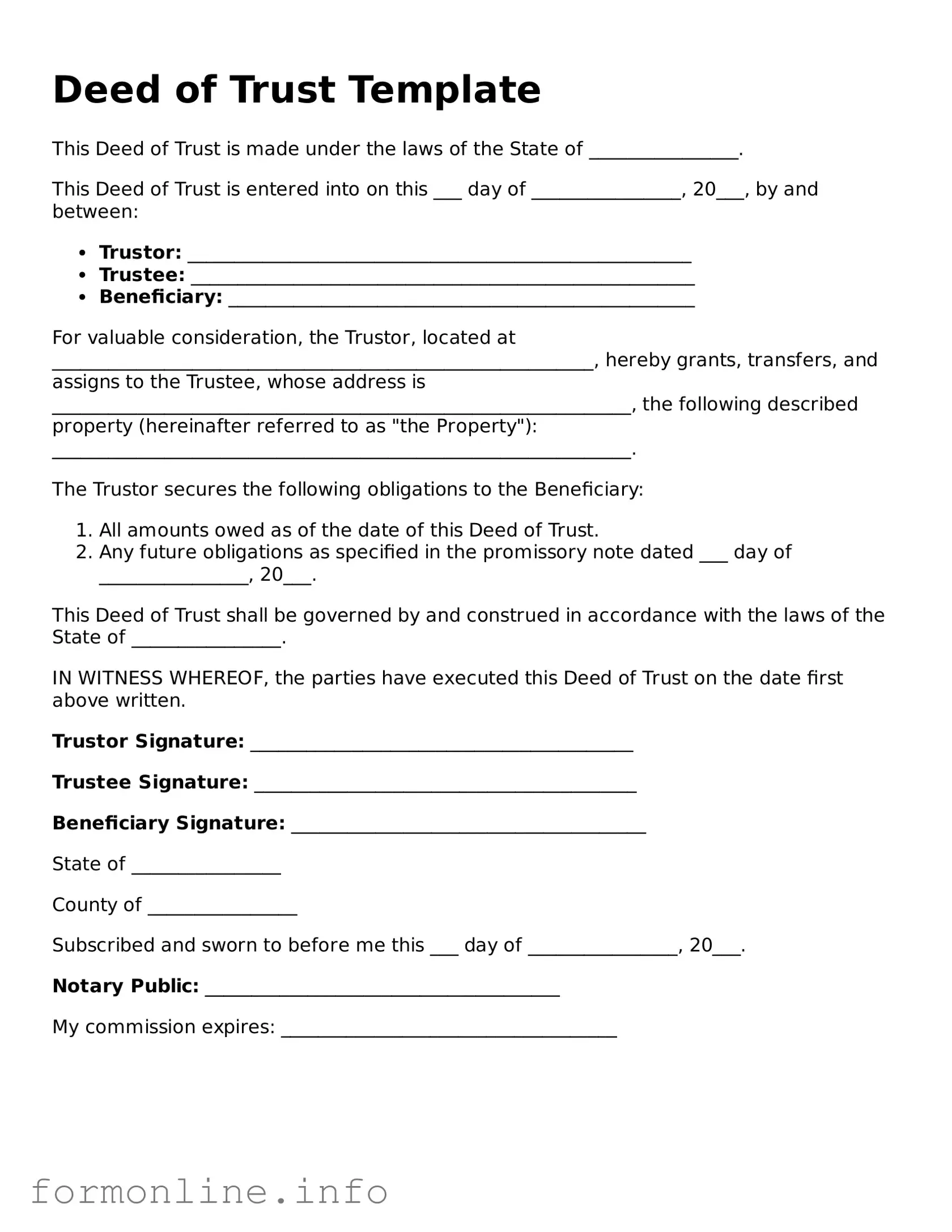Deed of Trust Template
This Deed of Trust is made under the laws of the State of ________________.
This Deed of Trust is entered into on this ___ day of ________________, 20___, by and between:
- Trustor: ______________________________________________________
- Trustee: ______________________________________________________
- Beneficiary: __________________________________________________
For valuable consideration, the Trustor, located at __________________________________________________________, hereby grants, transfers, and assigns to the Trustee, whose address is ______________________________________________________________, the following described property (hereinafter referred to as "the Property"):
______________________________________________________________.
The Trustor secures the following obligations to the Beneficiary:
- All amounts owed as of the date of this Deed of Trust.
- Any future obligations as specified in the promissory note dated ___ day of ________________, 20___.
This Deed of Trust shall be governed by and construed in accordance with the laws of the State of ________________.
IN WITNESS WHEREOF, the parties have executed this Deed of Trust on the date first above written.
Trustor Signature: _________________________________________
Trustee Signature: _________________________________________
Beneficiary Signature: ______________________________________
State of ________________
County of ________________
Subscribed and sworn to before me this ___ day of ________________, 20___.
Notary Public: ______________________________________
My commission expires: ____________________________________
